For hundreds of years travelers and merchants have been trying to cross the continent at the narrow isthmus of Panama. In 1514, Balboa went from the Atlantic to the Pacific on foot through jungle and over mountains. The trail called Camino de Cruces, was used for years by Spaniards and some 49er gold miners. Many died of yellow fever. Traces of the trail are still visible in the jungle.

The French attempted to build a sea level canal. More than 22,000 workers died of tropical diseases and accidents. The failed attempt cost over $287 million. Below is the French Cemetery. Each cross represents 100 dead workers.
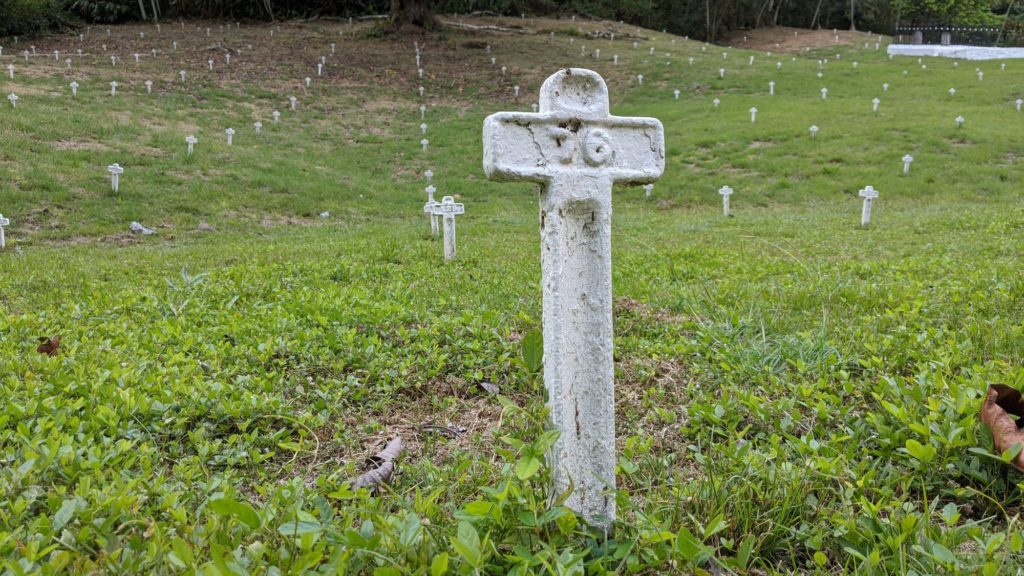
The biggest hurdle was the “Culebra Cut” through the infested jungle mountains. Digging deep enough for a sea-level passage proved impossible due to frequent landslides. When the United States took over the Canal project from the French in 1904 the plan was changed to a series of locks finally making the canal possible.
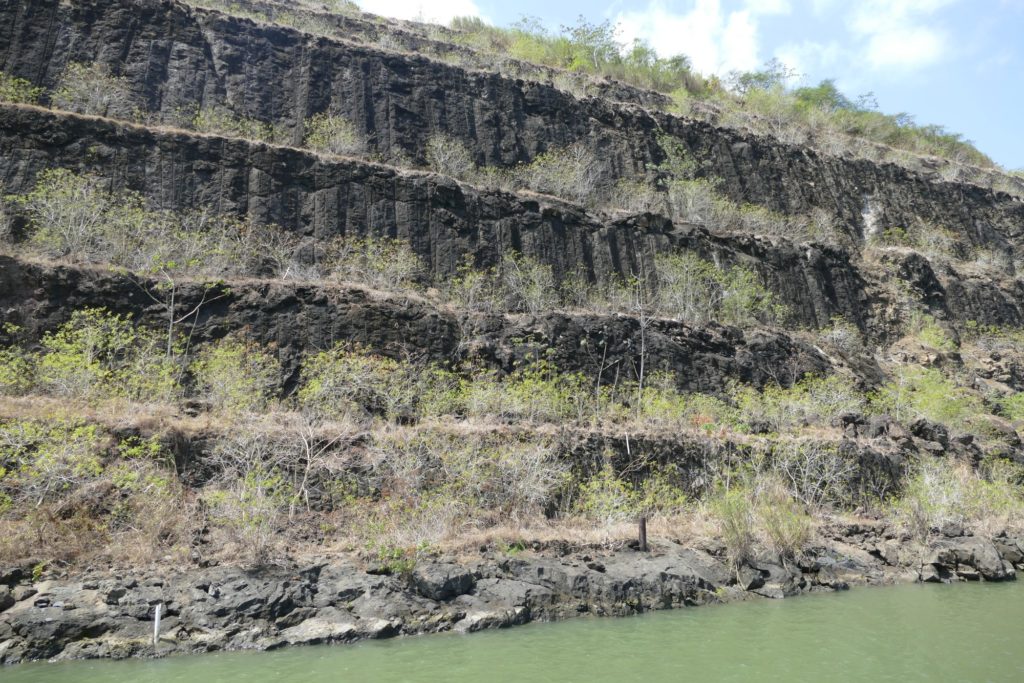
Not all ships and cargo traverse the canal. Panama City, and Colon on the Atlantic Coast, are major interchange ports for routing cargo.

Ships going through the canal pass through sets of 3 locks, raising them 87′ from sea level in order to accommodate the terrain of the Panamanian jungle and mountains.
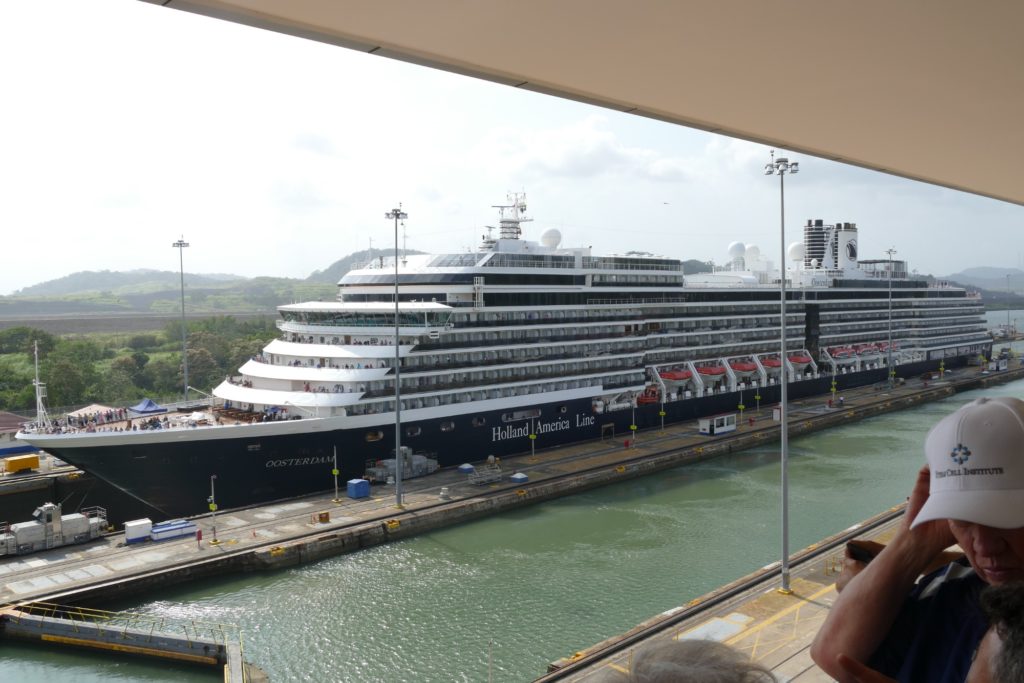
After rising through the 3 locks, the ship below is heading into the freshwater Lake Gatun.

Watching the locks operate is a spectator sport at Miraflores Locks. The visitor center is helps non-engineers understand the process. Of course it is also a bar serving Panamanian beer and home to an I-Max. Panama’s entrepreneurial.
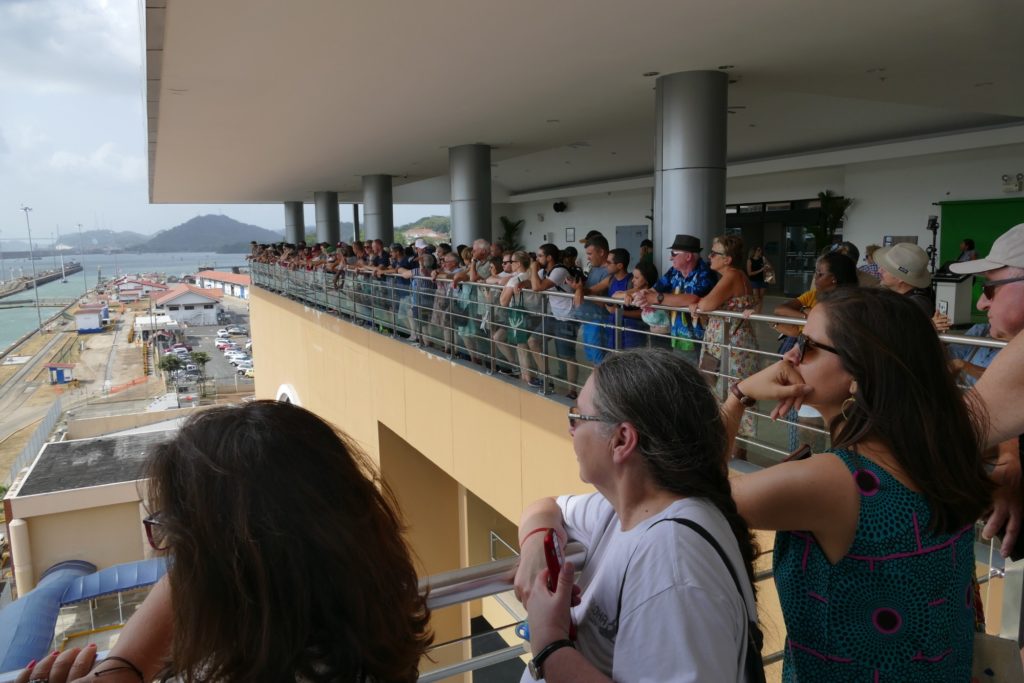
Ships all over the world have been built with maximum dimensions to fit into Panama Canal’s Locks: 106 feet wide by 1,000 feet long. An additional channel was recently completed at a cost of $5 billion that will take ships up to 156 feet wide by 1.400 feet long.
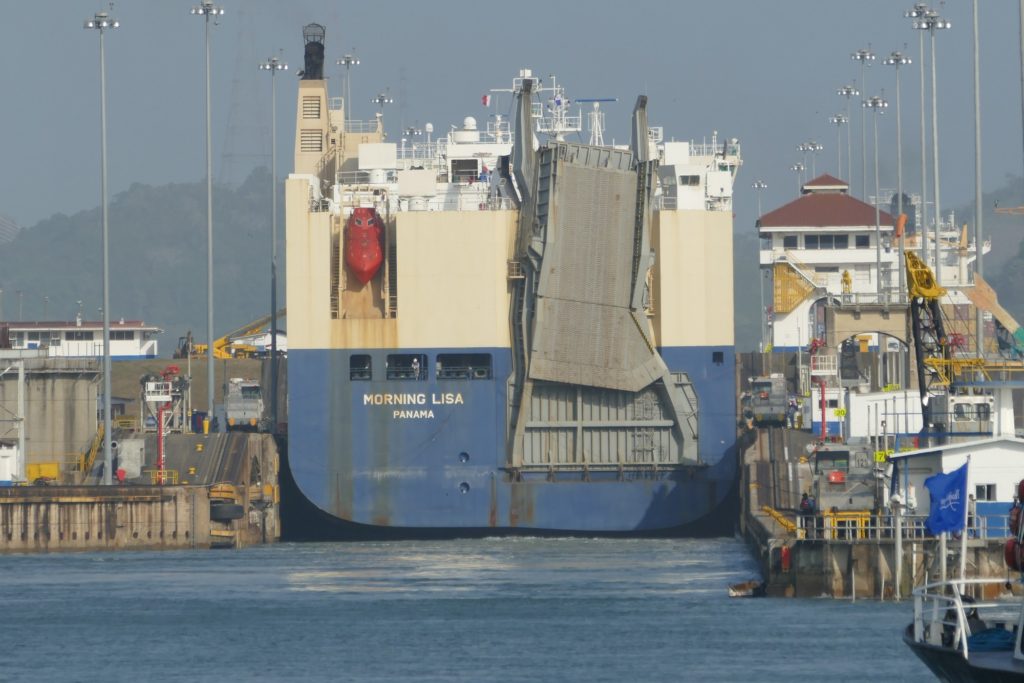
Ships passing through the locks move under their own power, tethered to electric “donkeys” like the one below that keeps them centered in the lock.
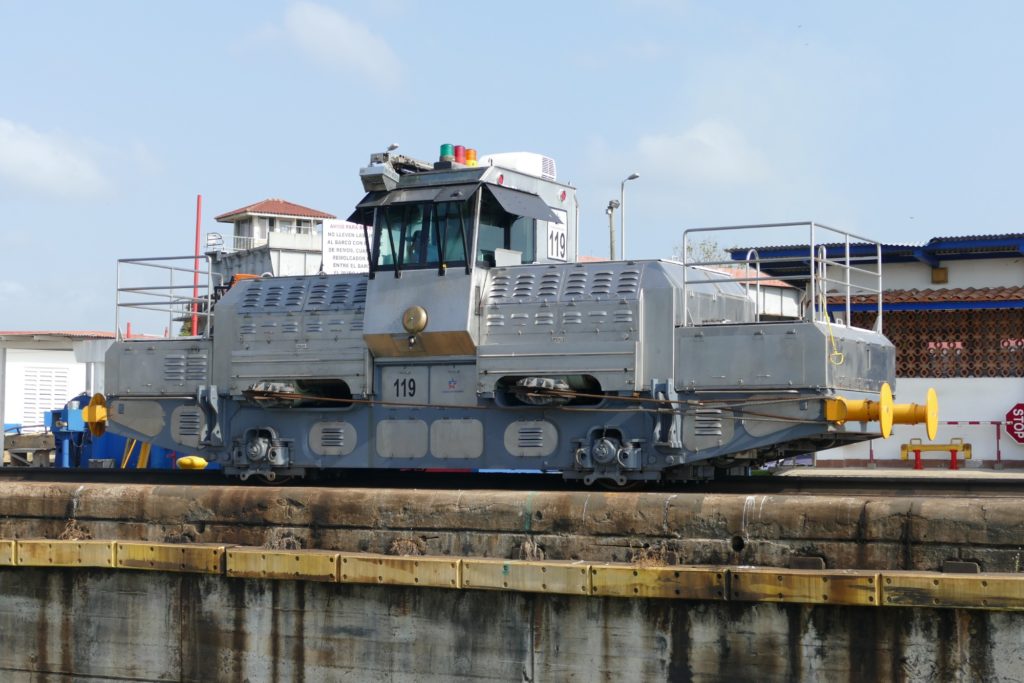
Fifty of us started our journey @ 7am on this funky tourist boat docked in Panama City Harbor. The canal charged $3,800 for our passage.
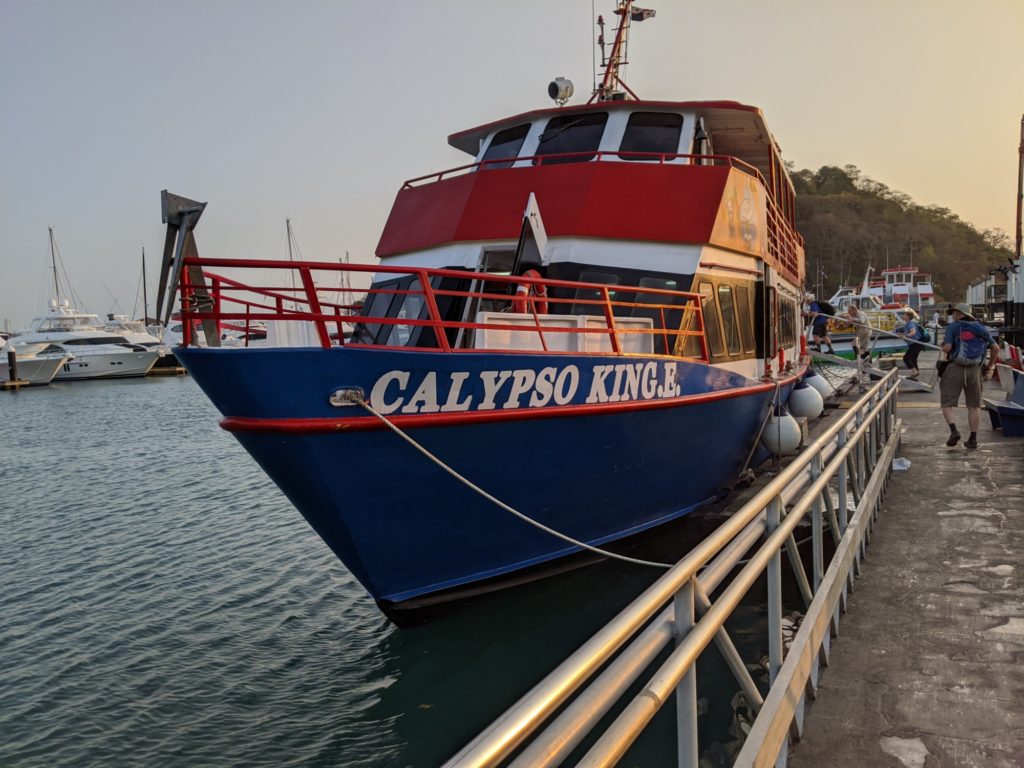
Every ship, large or small, must carry a highly trained Canal Pilot. The pilots come out to the ship on a tender like the one below. Even our little tourist boat had a pilot.

Photo below shows us entering a lock behind a large freighter and 2 other tourist boats. A tugboat had pushed the freighter up to the front gate of the lock and came back out making room for the 3 tourist boats behind.
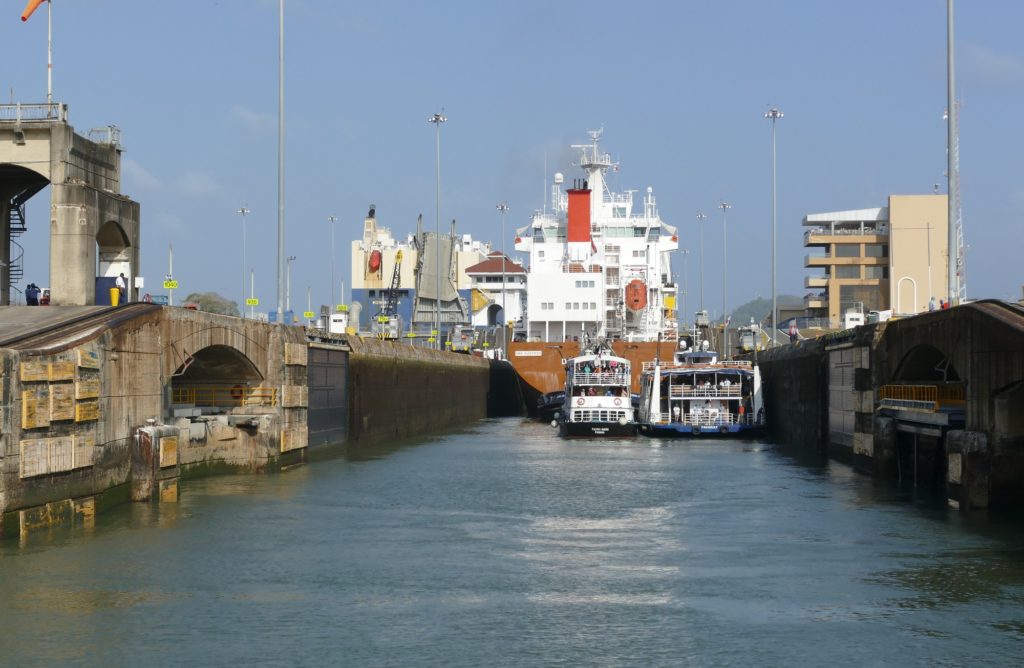
Here the huge gates that weigh 662 tons each are closing behind us.

The water bubbles and rises around us as 52 million gallons of water rush into the lock chamber from the lock above us..
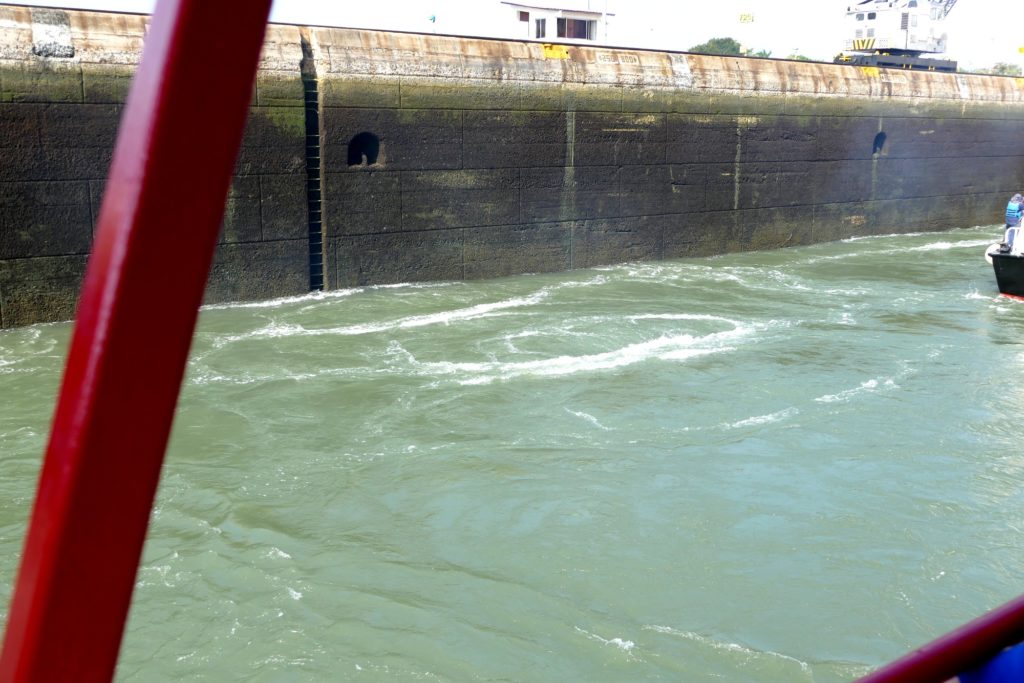
In about 5 minutes, our lock chamber is filled and we are ready to move onto the next lock chamber…but the process in each chamber actually takes about 1 hour, due to moving and positioning the ship and many safety checks,

Once through the locks we observed native wildlife like this Panamanian Deer.
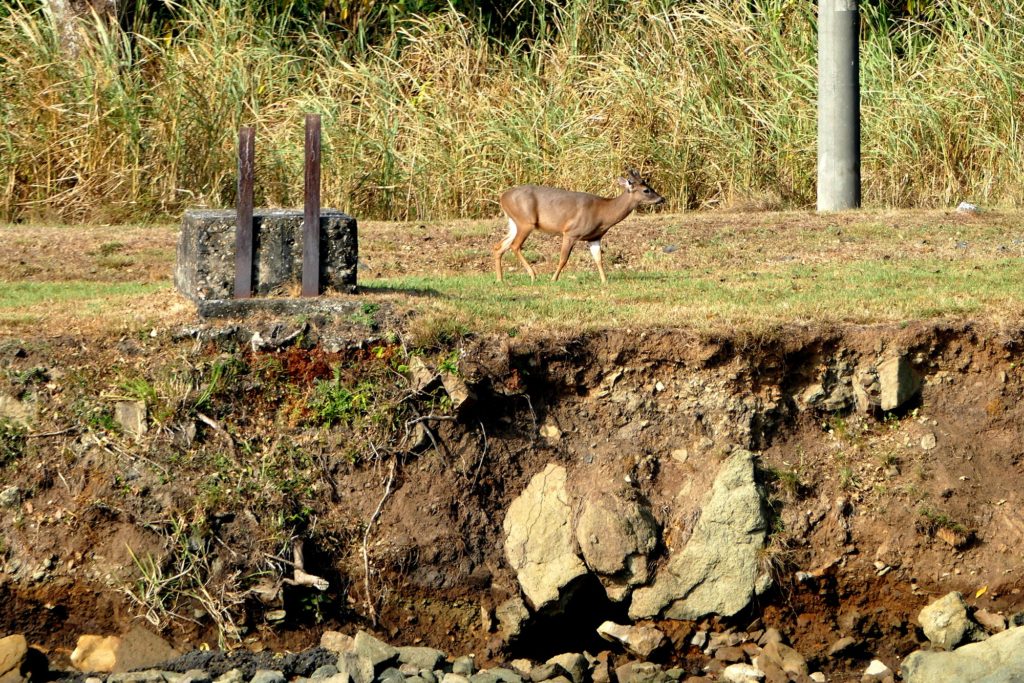
And this indolent crocodile sunning itself on the banks.

The huge, human made Lake Gatun between the locks up and the locks down takes about 3 hours to cross.

After reaching the Atlantic side, we repeat the process of moving through the locks, this time dropping a total of 87 feet. This photo of the lock chamber show a full chamber.

and now lock chamber is empty and the solid steel gates visible at the far end of the ship get ready to open. The massive, heavy gates are hollow so they float and are so well balanced they take very little energy to move.
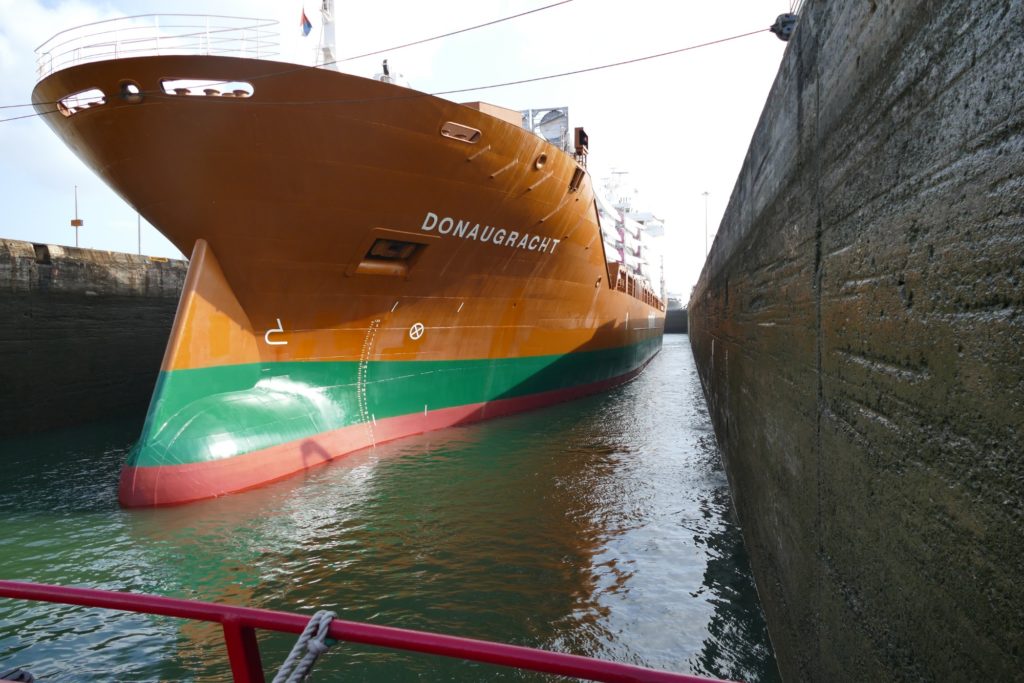
Touching the walls of the lock as we get ready to move on with our travel buddies Yona and Ed.
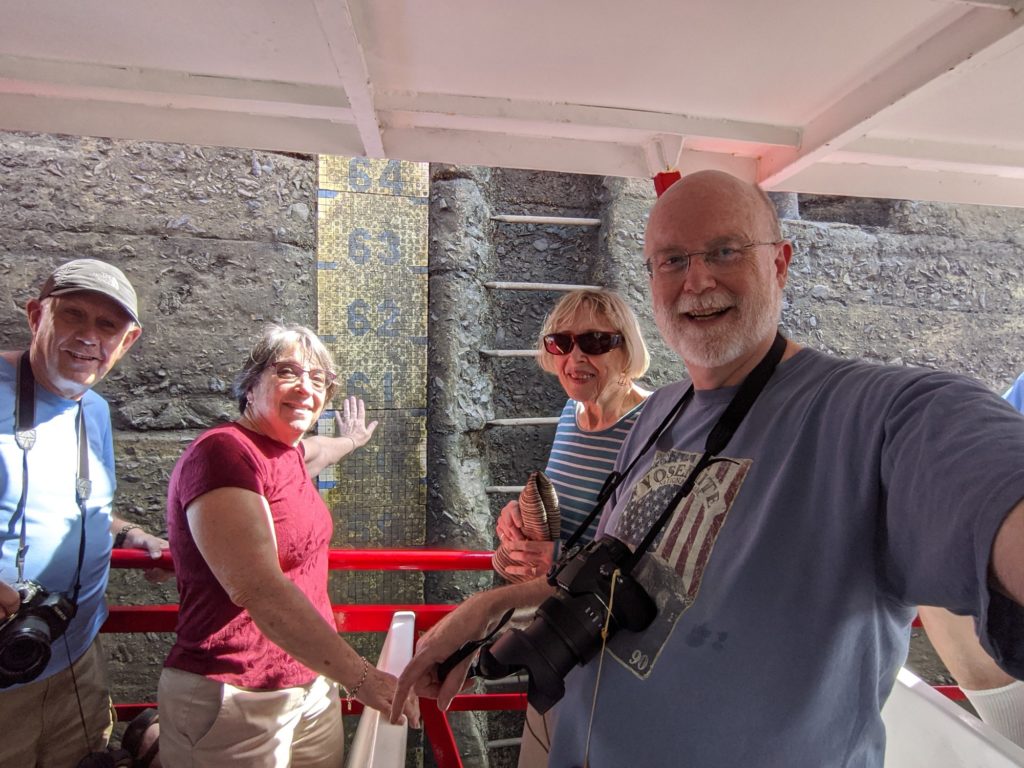
We’re exiting the last lock and motoring into the Caribbean (Atlantic) after our 9 hour passage. Looking back we see at the right of the photo, a remnant of the French attempt to build the sea level canal. The French plan, had it succeeded, would have been an ecological disaster, as non-native species would intermingle between the two oceans. One example: brittle starfishes from the Pacific would have destroyed the coral of the Caribbean.
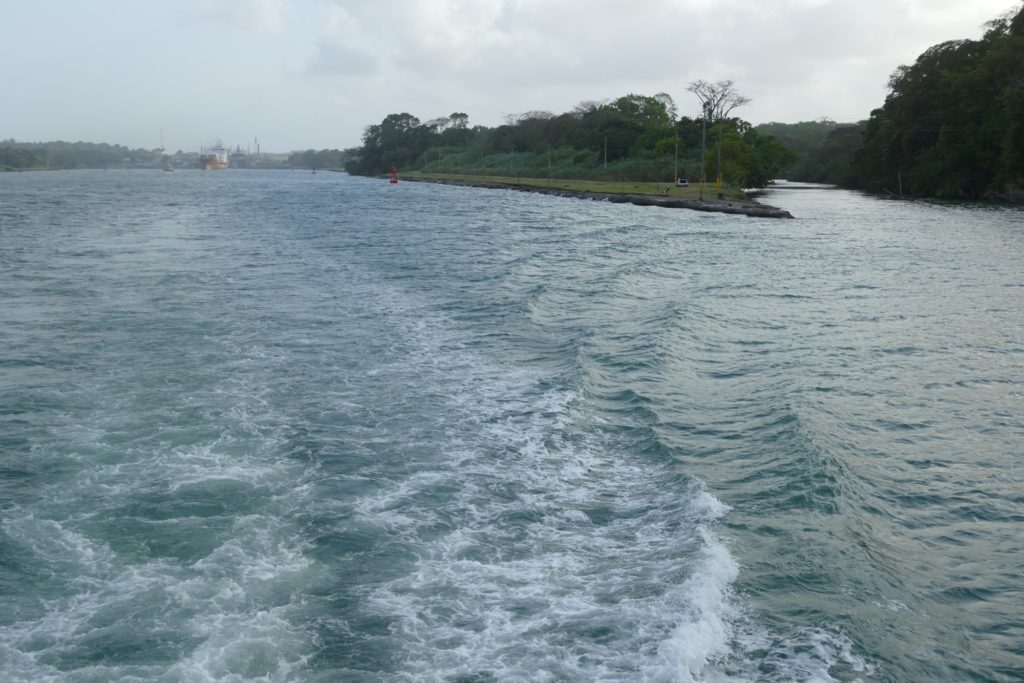
The Americans benefited from the French mistakes and opened the canal in 1914. In 1999, America turned canal ownership over to Panama, creating a neutral venture which is not a target. Panama is responsible for maintenance and planning for the future. In 2016 Panama opened an additional canal, wider with more advanced technology which charges as much as $800,000 for the biggest vessels to traverse the continent.
After digging into the history and engineering…one realizes Panama Canal is truly one of the 7 Wonders of the Modern World.